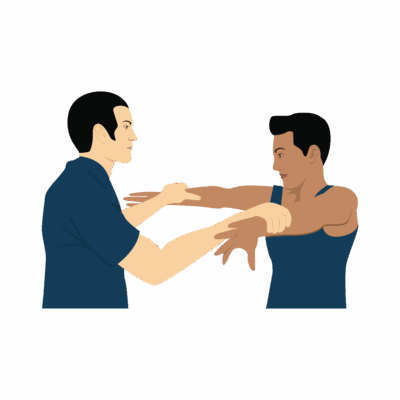Empty Can Test
The Empty Can Test (also called the Jobe Test) is a clinical assessment designed to evaluate the integrity of the supraspinatus muscle and tendon (one of the main rotator cuff muscles). It is especially useful for screening rotator cuff tears, supraspinatus tendinopathy, and identifying shoulder impingement syndromes.
How the Test is Performed
-
Client is seated or standing.
-
The client abducts the arms to 90° in the scapular plane (about 30–45° anterior to the frontal plane), with elbows extended.
-
Arms are internally rotated, so the thumbs point down (as if “emptying a can”).
-
The therapist applies downward pressure just above the wrists or elbows and asks the client to resist.
-
Positive Test: Pain or weakness in the superior or lateral shoulder, or inability to resist without compensation.
-
Compare both sides for differences in strength or pain response.
Clinical Significance
-
A positive test suggests involvement of the supraspinatus (possible rotator cuff tear), supraspinatus tendinopathy, subacromial impingement, or suprascapular nerve compromise.
-
Should be interpreted with other findings (history, ROM, Hawkins-Kennedy, Neer, drop arm) for greatest accuracy; false positives are possible due to generalized shoulder pain or referral patterns, and false negatives if mild pathology or compensatory muscle use.
Assessment
-
Use this test in clients with superior or lateral shoulder pain, weakness, night pain, or limited overhead range of motion.
-
A positive test means caution with deep tissue, friction, or aggressive techniques over the supraspinatus tendon and subacromial space. Therapists should prioritize gentle work and pain-free movement.
-
Track progress using test results and correlate with client reports to inform treatment adjustments.
Treatment
-
Focus on gentle soft tissue therapy for compensating shoulder muscles, scapular stabilizers, and posture correction in clients with positive findings.
-
Avoid repetitive, forceful overhead activity or pressure directly on the supraspinatus.
-
Encourage postural correction, home exercises, and client education for optimal recovery.
Safety and Referral
-
Refer clients for further evaluation if severe pain, acute weakness, or persistent loss of function is present.
-
Do not repeat provocative maneuvers in the presence of sharp pain, traumatic history, or suspected severe tear.

